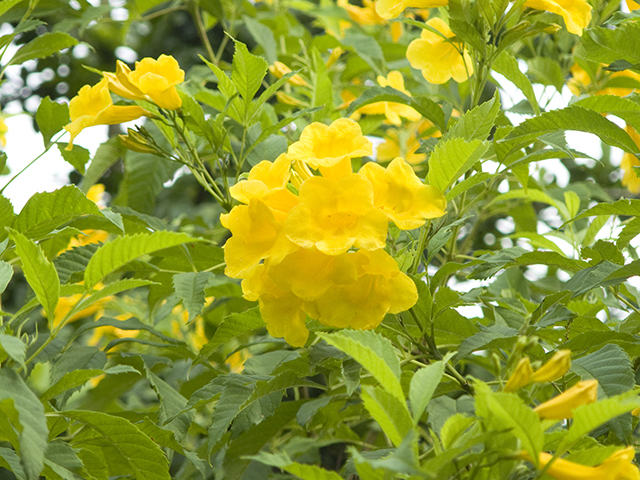Cat’s claw bark emerges as Lyme disease’s nemesis, outsmarting stealth bacteria when antibiotics fail
For decades, Lyme disease patients have been trapped in a cycle of debilitating symptoms and ineffective antibiotic treatments, their bodies ravaged by the elusive Borrelia burgdorferi bacteria. But what if the answer lies not in Big Pharma’s lab-made drugs, but in an ancient Peruvian herb? Emerging research reveals that Uncaria tomentosa, commonly known as cat’s claw, holds powerful bioactive compounds that not only dismantle Lyme bacteria’s defenses but also rebuild immune function—something antibiotics alone fail to achieve. In an era where corporations prioritize profits over cures, nature may hold the key to liberation from chronic suffering.
Key points:
- Cat’s claw, particularly its TOA-free Samento form, disrupts Lyme bacteria’s shape-shifting abilities, making it far more effective than conventional antibiotics.
- The herb modulates immune response, reduces inflammation, and protects neurological function—addressing Lyme’s systemic damage.
- Clinical studies, including a landmark 2020 study investigating botanical treatments, confirm Cat’s claw and other botanical often faster recovery and fewer relapses compared to standard antibiotic-based Lyme disease treatments.
- Supporting therapies like glutathione supplementation, detox protocols, and anti-inflammatory herbs amplify recovery.
- Several botanical extracts, including black walnut hull, have emerged as therapeutic treatments for Lyme’s disease.
How to spot Lyme Disease before it hijacks your health
Lyme disease is a master of disguise, often evading diagnosis due to its vague early symptoms. The hallmark bullseye rash (erythema migrans) appears in only 70% of cases, so absence doesn’t rule it out. Early flu-like fatigue, muscle aches, and fever—common post-tick bite—are red flags.
As infection progresses, watch for neurological red flags: brain fog, facial palsy (Bell’s palsy), or tingling in extremities. Chronic cases may mimic autoimmune disorders, with heart palpitations, joint swelling, or light sensitivity. If standard antibiotics fail or symptoms linger, advanced testing (like Western Blot or PCR) or co-infections (Babesia, Bartonella) may be at play. Act fast: early treatment prevents long-term havoc on the immune system.
How cat’s claw dismantles Lyme’s defenses
Lyme disease isn’t just stubborn—it’s a master of evasion. Borrelia burgdorferi morphs into different forms (spirochetes, cysts, and biofilm-protected colonies) to resist antibiotics. But cat’s claw’s alkaloids, like isopteropodine, wage biological warfare on these stealth tactics. Unlike synthetic drugs that only target one bacterial form, cat’s claw’s pentacyclic oxindole alkaloids (POAs) dismantle Lyme’s inherent survival strategy.
Indigenous healers in Peru have used cat’s claw for centuries to treat infections and inflammation. Modern science now validates their wisdom. A 2020 study found Lyme patients using Samento—a TOA-free cat’s claw extract—reported significant improvements in fatigue, joint pain, and cognitive function. These results expose a harsh truth: mainstream medicine’s reliance on antibiotics is outdated—and often catastrophic for chronic Lyme sufferers.
The glutathione connection: Detoxifying Lyme’s toxic aftermath
While cat’s claw attacks Lyme at its root, glutathione—the body’s “master antioxidant”—cleans up the wreckage. Lyme bacteria release toxins that cripple immunity and spike inflammation, but glutathione binds to these poisons and flushes them out.
For Lyme patients, boosting glutathione isn’t optional—it’s survival. Liposomal glutathione supplements and precursors like N-acetylcysteine (NAC) repair cellular damage, shield nerves, and quell cytokine storms. But Big Pharma won’t promote glutathione—because it can’t be patented. Instead, patients are pushed toward expensive, symptom-masking drugs while the underlying infection festers.
Beyond cat’s claw, these supplements can accelerate recovery:
- Celery juice (32 oz twice daily): Floods the body with electrolytes and detoxifying sodium cluster salts.
- Barley grass juice powder: Chlorophyll-rich, alkalizing, and packed with immune-boosting minerals.
- Zinc and vitamin C: Critical for immune defense and collagen repair.
- Lemon balm and licorice root: Calm viral co-infections like Epstein-Barr.
Best synergistic treatments for Lyme’s
In the study, Evaluation of Natural and Botanical Medicines for Activity Against Growing and Non-growing Forms of B. burgdorferi, several botanical medicines emerged as therapeutic.
- Cryptolepis sanguinolenta (anti-inflammatory, antibacterial; acts via cryptolepine and DNA intercalation)
- Polygonum cuspidatum (contains resveratrol and emodin; effective against log-phase spirochetes)
- Juglans nigra (black walnut; contains juglone, with bacteriostatic effects)
- Artemisia annua (artemisinin showed activity against persister cells; whole-plant extracts may enhance efficacy)
- Cistus incanus/creticus (contains carvacrol; inhibits biofilms)
- Scutellaria baicalensis (baicalein disrupts biofilms and synergizes with antibiotics)
In a world where corporate medicine profits from perpetual sickness, cat’s claw and its natural allies offer more than hope—they offer a road to real healing.
Sources include:
TheEpochTimes.com
MedicalNewsToday.com
Pubmed.gov
FrontiersIn.org
Read full article here


